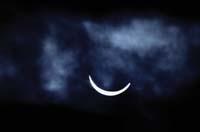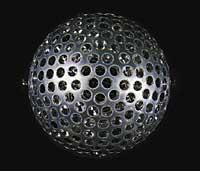The tide, the force of neighbor
2007/05/01 Roa Zubia, Guillermo - Elhuyar Zientzia Iturria: Elhuyar aldizkaria
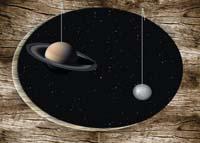
The planet where the satellites are, as in the orbit that children separate the candies. And it seems that the planets do not affect the vicissitudes of satellites. It does not seem obvious, for example, that Jupiter has four large satellites and thirty-five small (thirty-five, which we know). Jupiter is giant and the largest satellite, Ganimide, is very small. It could be thought that Jupiter will hardly recognize the presence of Ganimide. But that is not true.
Being satellites affects Jupiter and any other planet. The shape and rotation of the planet depends on the satellites of the environment. It is a general law. The same happens with the entire solar system, in short, the planets are satellites around the Sun.
The famous formula
To understand the influence of satellites one must understand Newton's law of gravity: two bodies with mass are attracted. Any body. For example, the pencil you have in your hand and an African zebra. The only condition is that both bodies must have mass. Yes, it depends on the force of attraction. Two factors must be taken into account: on the one hand, if the masses are large or small and on the other, the distance between them.
From the point of view of gravity, the pencil and the African zebra have a very small mass and are very far away from each other to perceive their attraction strength (especially because they are surrounded by other bodies that attract them with more force).
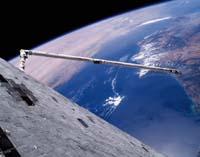
With the stars, the effect of gravity is much greater. They are very special cases: stars, planets and satellites have a large mass that compensates for the distance between them. It should be taken into account, for example, that the lowest plan-satellite distance is much higher than the distance between the pencil and the zebra of our example. And that with the distance the force of gravity weakens very quickly. Precisely in the divisor of the famous formula of Newton appears the square of distance.
F = G x M x m/r 2
(distance represented by r, being G a number and M and m the masses of both bodies). This means that by increasing twice the distance between two bodies, the force of attraction is not half the initial, but four times smaller.
The gut of the planets
The way gravity changes with distance makes the satellite planets not spherical. In short, the planets are huge; when they have a satellite nearby, the mass of the satellite attracts more the near part of the planet than the center of the planet; and much more than the other side of the planet. For example, one side of the Earth is at 12,756 kilometers closer to the Moon than the other, while in Jupiter the difference is much greater, with 142,984 kilometers of diameter. The satellite pulls the nearest part with less force on the other side of the planet. Consequently, the planet adopts an ellipsoid form in the direction of the satellite (both sides, forward and backwards).

The planet suffers a deformation, especially if it is not made with very rigid materials. Jupiter, Saturn, Uranus and Neptune are mostly composed of gas, which is very easily deformed. Mars, Earth, Venus and Mercury are much more rigid because of their general solidity. However, Mercury and Venus have no satellite and those of Mars are very small. But the Earth does have a large satellite nearby, the Moon. And the Earth perceives the force of attraction of the Moon, both in the atmosphere and in the ocean and in the solid earth. Consequently, the Earth is deformed. It is stretched on the side and the opposite of the Moon. This is demonstrated by the tides of the sea, where the oceans deform more than the earth because they are liquid, so that in the marine part of the Moon and in the contrary a pleamar occurs.
In addition, rotation
We speak of satellites, but it should be noted that not all sources of deformation of the planets are satellites. The rotation also deforms the planets. The faster the rotation and the more flexible the planet is, the more deformation it suffers. The most spectacular example is Saturn. It is said to be a gas giant, deformable, with a very fast rotation. It is evident that the sides of the two poles are pressed and the equator swells.
Finally, a planet with satellite is not spherical, it has at least two deformations: the one caused by the satellite and the one directly caused by rotation. The planet is stepped on and, in addition, stretched in the direction of the satellite. And not just that. The analysis of the deformation of the planet is more complicated if the coincidence of both effects is taken into account. In short, the planet is stretched in a given direction, but the rotation makes this extension change from the point of view of the planet.
The Earth and the Moon, for example. At any given time, if the Moon is over Indonesia, the biggest deformation it produces can be in Borneo, for example (Borneo and, of course, on the other side of the world, in the area of Colombia, because deformation is extended on both sides). But the rotation of the Earth causes, over time, the lump to move westward. Six hours later, for example, the moon will be over Africa and the biggest deformation will be in Congo (and in the Pacific, near the equator in the length of Hawaii). On all planets with moon the same occurs.
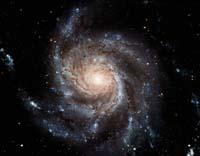
Deformation moves like a wave at the same time as rotation, because the planet rotates, and the planet is constantly correcting the direction of deformation to guide the satellite. Correction is not sudden, it requires some time.
Therefore, the deformation is slightly shifted from the plan-satellite axis, ahead when the planet's rotation is faster than the satellite's orbit and delayed otherwise. In both cases, the satellite pulls the deformation that is moved and that changes the rotation speed of the planet. In short, by influence of the satellite, the tendency of the planet is to equalize the speed of rotation with the speed of the orbit of the satellite, that is, after billions of years, the same side of the planet will always look at the satellite.
The Moon, for example, is slowing the rotation of the Earth, so the duration of the day is 0.0016 seconds shorter for each last century. It is a very slow process, but in theory, someday, the Earth will always have the same side towards the side of the Moon. This means that on the other side of the Earth the Moon will not be seen. It will always have the same place on the Moon. If it were Borneo, for example, from America would never see the Moon (without taking into account that by then the distribution of the continents would be different). In addition, the tidal power will also paralyze the tidal fluctuations; in our example, Borneo would have the pleamar forever (even America) and Europe, for example, always the bajamar.
Looking at each other
The same effect that the satellite has in the movement of the planet occurs backwards; the planets deform the satellites and, over time, adapt the rotation to always show the same difference to the main planet. It is also done by artificial satellites (although the materials of artificial satellites are hardly deformed). The effect is stronger on satellites than on the main planet.
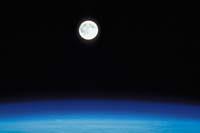
The Moon, for example, suffered long ago the influence of this effect and today it always shows us the same difference. Another more advanced example is the Pluton-Karon binary system. Due to the influence of the tide, both are taught the same face for a long time. From Pluto you see the only side of Karon and from Caron the only one of Pluto.
Other planets and satellites go the same way. And also the stars. Stars also act on the planets, and vice versa. With time, therefore, it is to be expected that the Earth will always show the same face to the Sun. However, the Sun will not last so long. It disappears before (and therefore the Earth). The strength of the tides is important, but it is not the only one that causes spatial events.
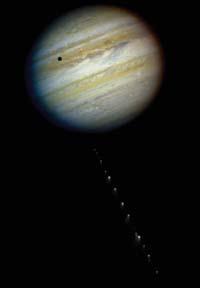


Gai honi buruzko eduki gehiago
Elhuyarrek garatutako teknologia



